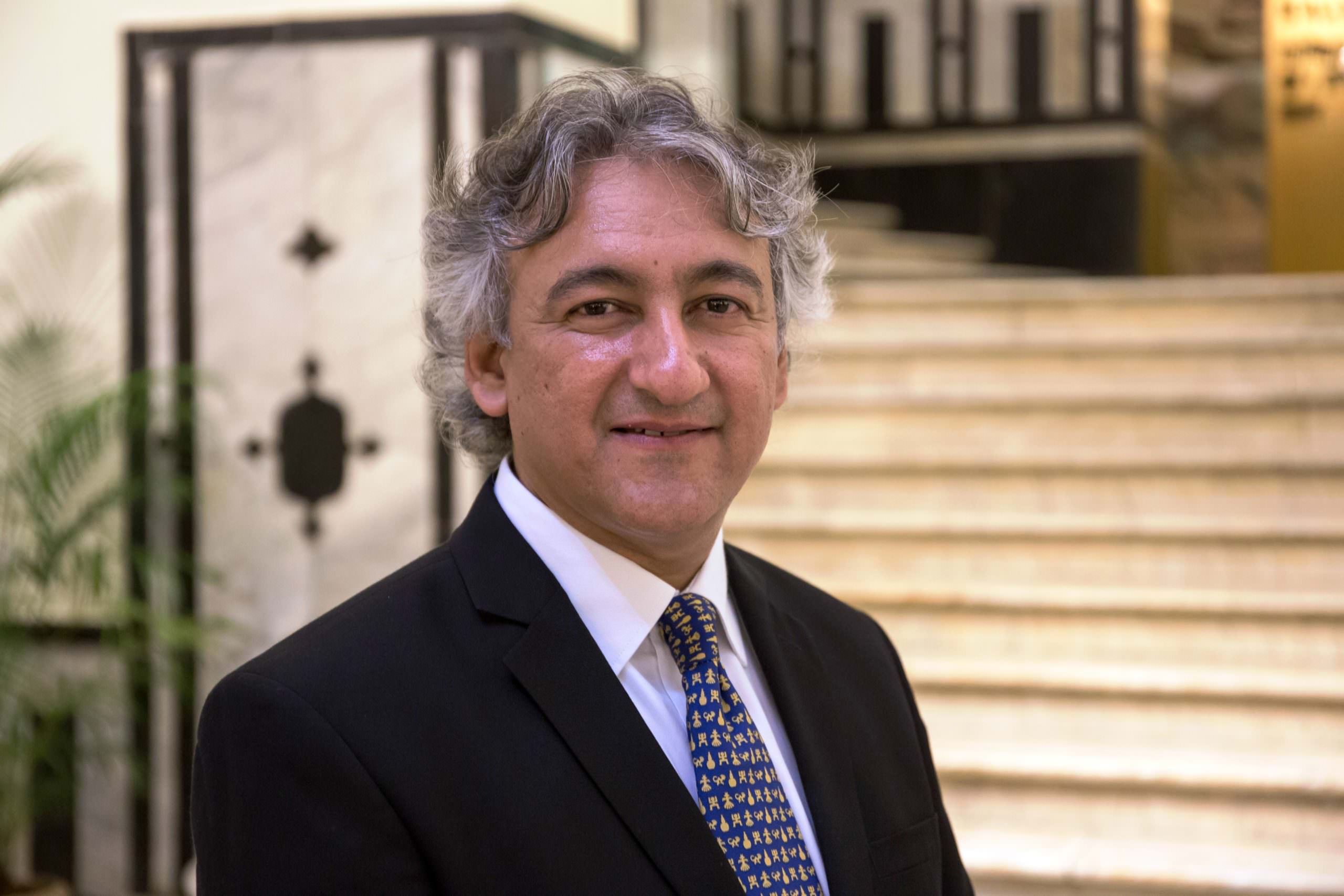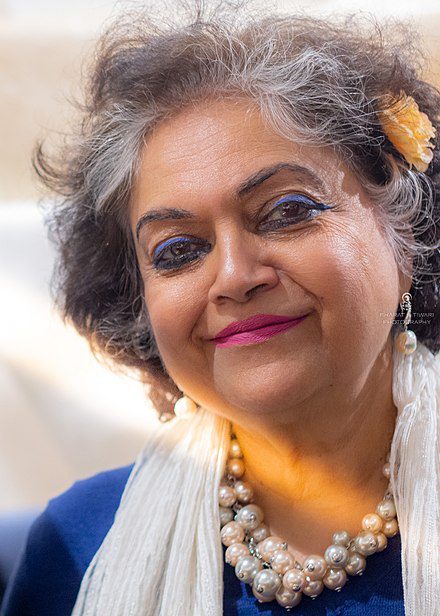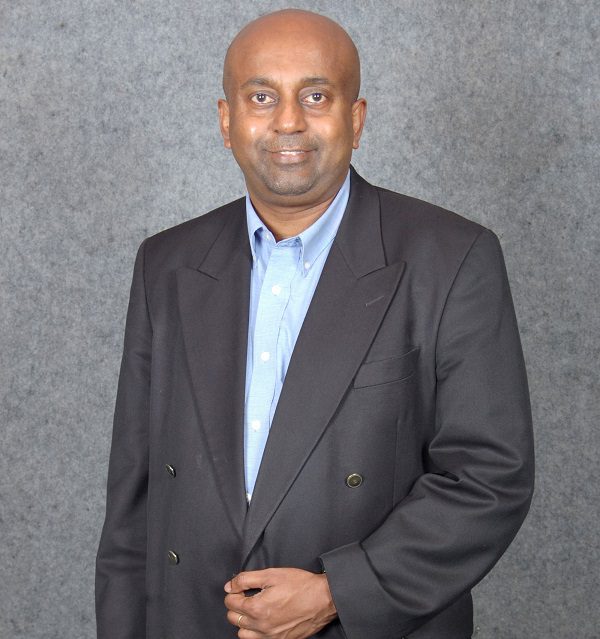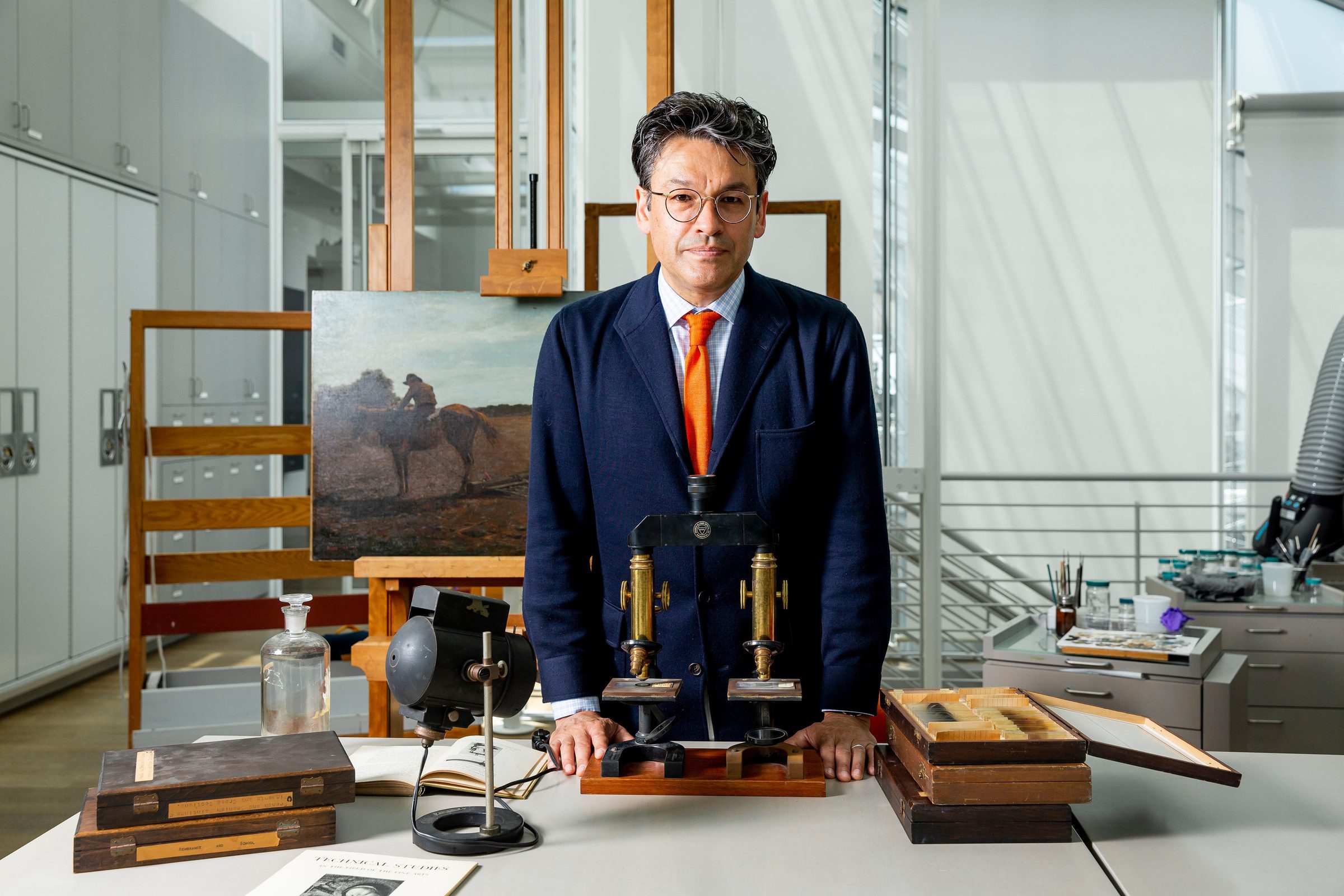
A conservation scientist at CSMVS uses technology to look closer at a work of art. Image courtesy of CSMVS Conservation Lab.
Conservation Science Research and Training Program, CoSTAR, aims to build up a temper of scientific studies for the conservation of art objects in India in conjunction with art historical studies. The three-year program is a collaboration between the Mittal Institute, Harvard University, Harvard Art Museums, and the Chhatrapati Shivaji Maharaj Vastu Sangrahalaya, Mumbai. Launched in December 2020, CoSTAR is envisioned as a series of theory and practical modules covering various topics in Conservation Science.
Between April 15 – June 20, 2021, CoSTAR’s Module 1, was run by the Mittal Institute in association with its partner institutions. This first module comprised online lectures during nine weeks to bridge museum studies, art conservation and conservation science. The program’s 13 workshops and several public lectures were led by world-renowned experts from the US and India who examined both technical art history and the science of conservation. This comprehensive program covered conservation approaches that incorporate multiple disciplines, including chemistry, microbiology, digital technologies, art history, and the social sciences.
Given that Module 1 was designed as an introduction to the ways in which Art and Science can come together to conserve art, session topics were intentionally broad, encompassing a wide range of topics. For instance, lectures introduced the Historic and Artistic Works of South Asia, the importance of Technical Art history, the intersections of art history and material science. Other themes included understanding pigments used in Indian paintings, the role of systematic data collection, caring for new materials such as plastics; preventative conservation, and exploration of environmental, economic, social and cultural factors that may impact care of art objects. Some sessions covered traditional ecological knowledge and practical cultural heritage conservation, and technology and software systems for heritage conservation. Experts also addressed the challenges of saving intangible heritage, among others. Speakers enriched discussions with specific case studies to elucidate the topics and their practical applications. The speakers in Module 1 exposed participants to the projects they had worked on, giving participants new concepts and ideas to apply to their own conservation work in South Asia.
By serving as an excellent introduction to aspects of art and science in the field of art conservation, the inaugural program emphasized and accomplished a key purpose of CoSTAR: to create a culture of collaboration and respect between those who practice conservation science and those who are trained in the historical aspects of art. The program attracted 117 participants from diverse backgrounds and institutions, yet complementary skill sets. Participants included conservation professionals who work with art objects, architecture and textiles and intangible heritage, art historians, curators and professors. Over 50 institutions both public and private were represented, spanning the length and breadth of India.
While introducing participants to a toolkit through lectures and presentations, a key aim of the various sessions in CoSTAR’s Module 1 was to foster a sense of belonging to a group of professionals that are passionate about conserving art and culture in South Asia. The online Zoom Workshops were akin to classroom seminars and encouraged ample discussions among participants and between experts and participants to highlight the rich experiences from their work in South Asia. Each session ended with a lively Q&A with speakers moderated by Anupam Sah, Head of Art Conservation at CSMVS Museum, Mumbai, which brought valuable perspectives from participants to the fore. These conversations planted seeds in the minds of participants, providing avenues for further exploration which were discussed more fully in break-out rooms and focused group discussions, which further enriched the understanding of possible connections between art and science. Within a couple of weeks into the program, a sense of community, sharing, camaraderie and openness was palpable among participants — a long-lasting intangible outcome of this program.


Alka Pande, art historian, academic, author and museum curator.
Experts and participants made memorable remarks and thought-provoking suggestions for future CoSTAR programs. Well-respected Art Historian Alka Pande endorsed the uniqueness of CoSTAR, saying that while she had been working in the silo of art history, CoSTAR program has helped to connect her to conservation colleagues, archaeologists, curators in museums, etc. The “interconnectedness between subjects and people has been very helpful to breaking the silos.”

Vinod Daniel, Chairman & CEO, AusHeritage & India Vision Institute.
Lauding the effort of such initiatives, Vinod Daniel, Chairman & CEO, AusHeritage & India Vision Institute remarked, “Costar will plant a seed to harness science for better collection care.. The impact is not short term and will be seen in the years to come.” He added, “science can also help with understanding the materiality of an object and by adding the historical context of an object we can understand how it has degraded over time.”

Narayan Khandekar, Director of the Straus Center for Conservation and Technical Studies, Harvard University.
Narayan Khandekar, Director of the Straus Center for Conservation and Technical Studies, Harvard University concluded that “the success of the course will be in knowing how scientists could communicate complicated science to nonscientists and how non-scientists would learn the science of the materials.” He added that the key to the practice of conservation science is to know what are some important questions to ask of the objects.
Module 1 has inaugurated the way for a ‘Knowledge Commons’: a virtual platform to bring together museums and cultural and academic institutions to collaborate and share best practices that constitute a viable ecosystem for museums and the scientific study of cultural heritage in India. CoSTAR’s Module 2 will nurture the seeds implanted by Module 1 and will focus on the painted surfaces of historical Indian art-objects. Module 2 is planned for Fall 2021 to Summer 2022, starting on November 18, 2021 with a roundtable discussion amongst the heads of various departments from the Harvard Art Museums on how they engage with research in Technical Art History. For further information on the Nov 18 event, please visit the event page.
